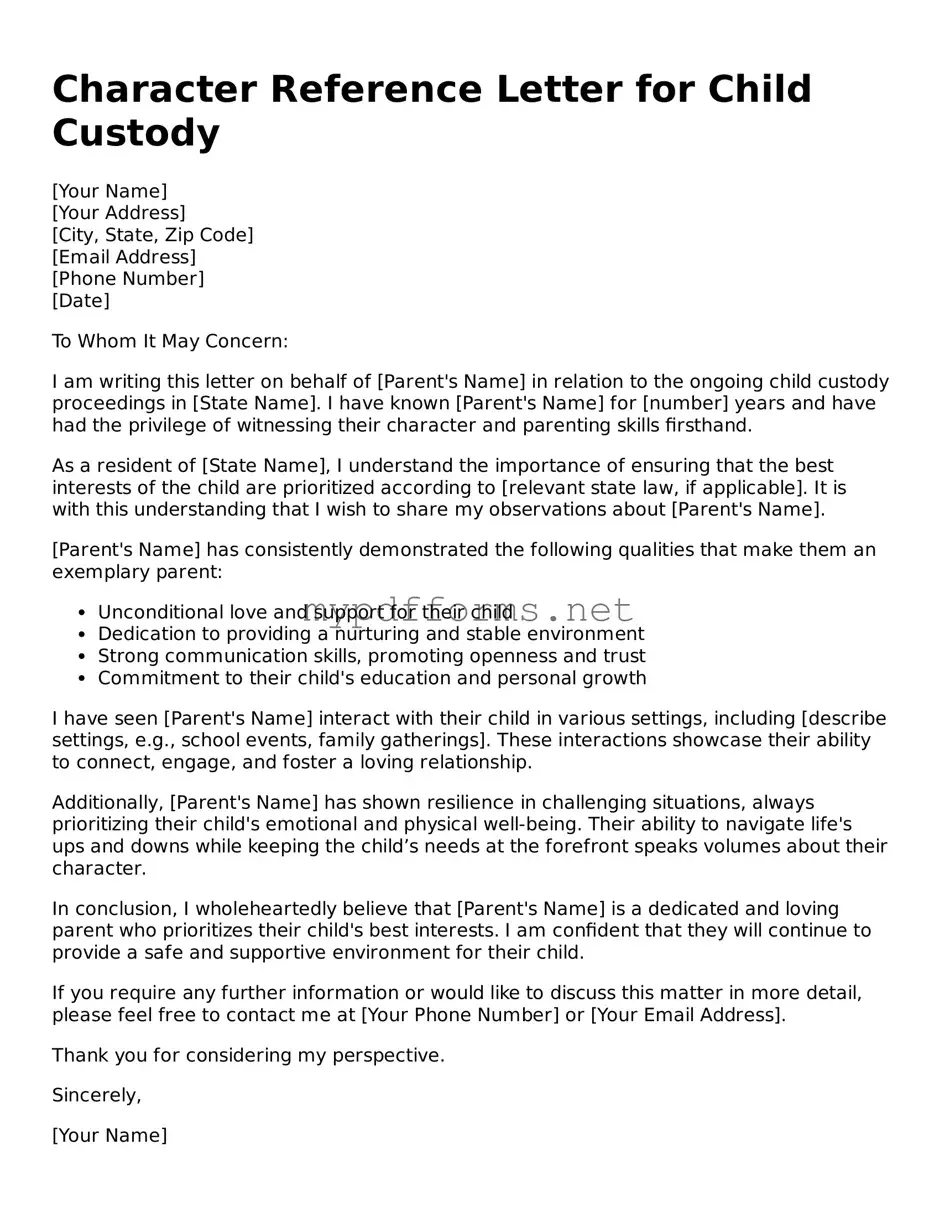The Character Reference Letter for Child Custody is similar to a Personal Reference Letter. Both documents serve to vouch for an individual's character and behavior. A personal reference letter typically highlights the positive attributes of a person, often in relation to a specific situation, such as a job application or community involvement. In custody cases, the focus shifts to parenting abilities and the environment the child would be in, but the core purpose remains the same: to provide a trustworthy endorsement from someone who knows the individual well.
Another document closely related to the Character Reference Letter is the Affidavit of Support. This document is often used in immigration cases to affirm that a person has the financial means to support a relative or friend. While it serves a different legal purpose, both documents require the writer to provide a detailed account of their relationship with the individual in question and their ability to support them, whether financially or emotionally, especially in the context of child custody.
The Custody Evaluation Report is another relevant document. In custody disputes, this report is prepared by a mental health professional who assesses the family situation. While the Character Reference Letter offers a personal perspective, the evaluation report provides a professional analysis. Both documents aim to influence the court's decision regarding the child's best interests, but they do so from different angles—one personal and anecdotal, the other clinical and objective.
Similarly, the Parenting Plan is a crucial document in custody cases. It outlines how parents will raise their child post-separation, detailing aspects like living arrangements, visitation schedules, and decision-making responsibilities. While the Character Reference Letter supports one parent’s suitability, the Parenting Plan provides a structured approach to co-parenting. Both documents play vital roles in demonstrating a commitment to the child's welfare.
In many legal contexts, the importance of character assessments cannot be overstated, particularly when helping to determine custody arrangements. To this end, documents such as a Character Letter for Court can be exceptionally valuable. These letters allow individuals to voice their insights into a person's character and parenting capabilities, which might be referenced alongside other critical documents in a family court setting. For those seeking more information on how to draft such a letter, resources like PDF Documents can provide valuable guidance.
The Letter of Intent is another document that shares similarities. Often used in educational or healthcare contexts, it expresses a person's intentions regarding the care and upbringing of a child. In custody matters, a Character Reference Letter may serve a similar purpose by affirming the writer’s belief in the parent’s ability to provide a nurturing environment. Both documents are intended to clarify intentions and reassure the court of the child's best interests.
A Support Letter from Family or Friends can also be compared to the Character Reference Letter. This document typically comes from relatives or close friends who can attest to a person's character and parenting abilities. Both types of letters aim to provide a supportive narrative that can influence custody decisions. They offer insights into the individual's life and relationships, highlighting their strengths as a caregiver.
Additionally, the Court Report prepared by social workers or child welfare professionals bears similarities. This report assesses the living conditions and overall environment in which a child resides. Like the Character Reference Letter, it aims to inform the court about the child’s welfare and the parent’s capabilities. However, the Court Report is based on observations and interviews, while the Character Reference Letter is more personal and subjective.
Finally, the Testimonial Letter can be seen as analogous to the Character Reference Letter. This document is often used in various contexts to provide firsthand accounts of a person's character and actions. In custody cases, it serves to reinforce the parent’s positive qualities and their ability to provide a stable environment for their child. Both letters aim to persuade the court of the parent’s suitability and commitment to the child’s well-being.
